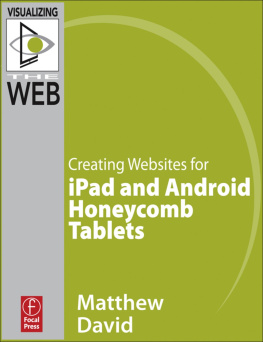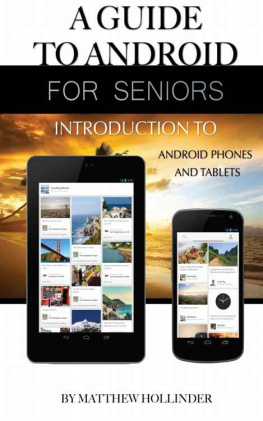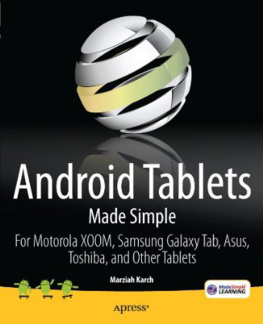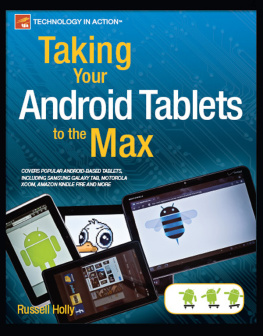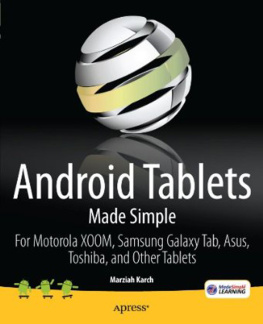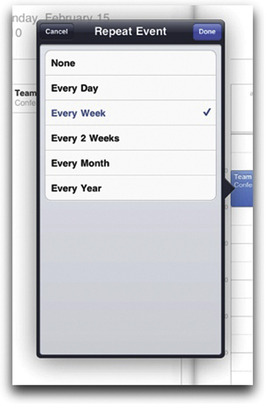Matthew David - Creating Websites for Ipad and Android Honeycomb Tablets
Here you can read online Matthew David - Creating Websites for Ipad and Android Honeycomb Tablets full text of the book (entire story) in english for free. Download pdf and epub, get meaning, cover and reviews about this ebook. year: 2011, publisher: Elsevier Science, genre: Home and family. Description of the work, (preface) as well as reviews are available. Best literature library LitArk.com created for fans of good reading and offers a wide selection of genres:
Romance novel
Science fiction
Adventure
Detective
Science
History
Home and family
Prose
Art
Politics
Computer
Non-fiction
Religion
Business
Children
Humor
Choose a favorite category and find really read worthwhile books. Enjoy immersion in the world of imagination, feel the emotions of the characters or learn something new for yourself, make an fascinating discovery.
- Book:Creating Websites for Ipad and Android Honeycomb Tablets
- Author:
- Publisher:Elsevier Science
- Genre:
- Year:2011
- Rating:3 / 5
- Favourites:Add to favourites
- Your mark:
Creating Websites for Ipad and Android Honeycomb Tablets: summary, description and annotation
We offer to read an annotation, description, summary or preface (depends on what the author of the book "Creating Websites for Ipad and Android Honeycomb Tablets" wrote himself). If you haven't found the necessary information about the book — write in the comments, we will try to find it.
It is crystal clear that support for tablets is essential in your Web site design. What is less clear is the approach you take to support tablets. Frameworks, such as Sencha Touch and jQuery Mobile are maturing to add support for tablets. Find out how this short ebook can provide you with forward thinking solutions that can be implemented today. How we consume information on the Web has changed forever: SmartPhones, Tablets, Interactive televisions, intelligent in-car systems and so much more are driving this change - your site needs to work on all of them.
Matthew David: author's other books
Who wrote Creating Websites for Ipad and Android Honeycomb Tablets? Find out the surname, the name of the author of the book and a list of all author's works by series.

